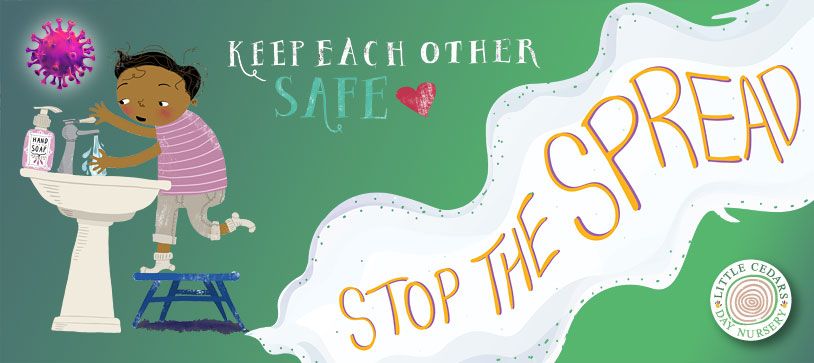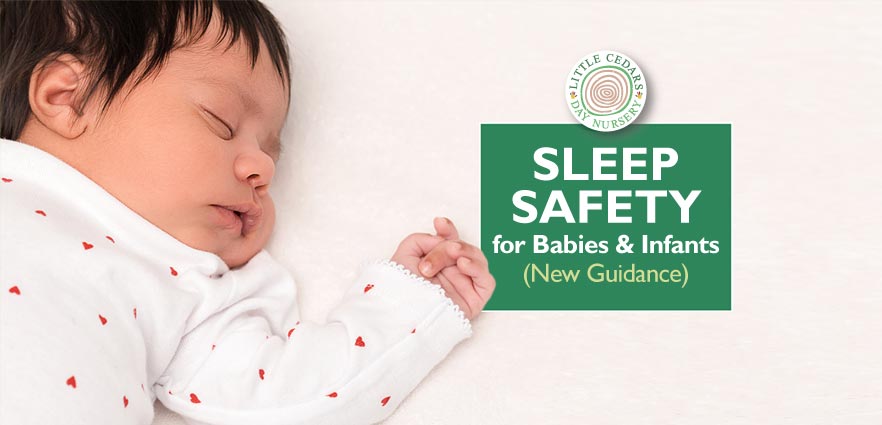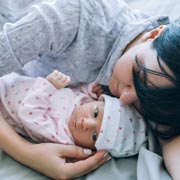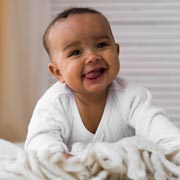
On June 1st, we re-opened Little Cedars Nursery at its Aldrington Road setting in Streatham, London SW16 1TU. Our thanks go to staff at our sister nursery, Beechcroft Nursery, for joining forces with us during the lock-down, to look after children of key workers alongside us. It’s wonderful to be back, though, as we can welcome old faces and new to our Streatham nursery and pre-school.
In view of the Government only recently easing the lock-down restrictions and with coronavirus still potentially at large, we have implemented stringent new health and safety measures at the nursery. These are being implemented to safeguard the health and wellbeing of babies, children, parents and staff.
“Everyone’s health is our topmost priority.”
Health & safety measures to keep you & your child safe from COVID-19
Here, we’ll outline what we are doing to keep you, you child and everyone at the nursery safe and well. These measures go well beyond Government guidelines and may be of comfort to those parents who are, understandably, a little nervous of sending their little ones back to nursery or pre-school so soon after lock-down.
Social distancing & extensive use of outdoor spaces
Moving much of the curriculum to our large outdoor areas will significantly reduce the risks that would otherwise be associated with more confined, indoor spaces. Outside, children are naturally going to have more room to themselves and the air they breathe will be cleaner – and will disperse to the atmosphere naturally. And, of course, we are ensuring everyone maintains good social distancing generally. Outside, we have made sure that there are sufficient covered areas outside to protect children and staff from the weather.
Small ‘bubble’ groups
We are also keeping babies and children within small ‘bubble’ groups. This will ensure that they are mixing with only a tiny number of individuals on a day-to-day basis. This vastly reduces the risks of catching contagions from one another. The bubble groups will be a size of 3, 4 or 6 children, depending upon the age group they fall into.
Limited numbers
Another excellent safeguarding measure is to limit the number of people attending the setting. For this reason, we will not take the nursery to full capacity while coronavirus is still at large. Again, this ensures that children and staff mix with as few people as possible.
Temperature checking
Temperatures of staff and children will be checked from time to time, as appropriate, using zero-contact electronic thermometers. That will allow us to get the earliest indication should someone begin to exhibit symptoms. We would then be able to take appropriate action i.e. to ensure that the symptomatic person isolates themselves at home rather than continuing to attend the nursery.
Track & Trace
In the unlikely event that anyone at the nursery does begin to exhibit possible symptoms of coronavirus, we will follow the Government’s Track & Trace policy. Anyone affected will be asked to take a test. They and their ‘bubble’ group will be required to self-isolate until the potential danger has passed. This will minimise the risk of the virus spreading to others.
New drop-off & collection rules for parents
We are asking parents to stagger their drop-off and collection times so that they encounter the minimum number of other people whilst doing so. Parents will not be granted entry to the nursery at the current time, so they must remain outside. While waiting, they will be required to keep a minimum of 2 metres away from others at all times.
New safety protocols for staff
Along with orchestrating the measures above, nursery staff will also be taking additional steps as part of their day-to-day precautions. These include:
- Liberal use of antimicrobial wipes for equipment, surfaces, door handles, toys, etc.;
- A change of clothes when they first arrive at the nursery in the morning, to ensure uniforms are fresh;
- free of bacteria and viruses;
- Wearing of face shields and double-gloving when changing nappies;
- Wearing of top quality, medically approved ‘FPP3’ face masks whenever appropriate.
Special precautions for food and snacks
Our in-house chefs are already taking additional precautions when preparing food for the children. As well as the standard hygiene protocols that one would expect, the new measures include the wearing of masks and face visors when preparing food. This keeps meals and snacks pristine.
These measures put the health and safety of children, parents and staff first. We hope they put your mind at rest if you were at all tentative about your baby or child attending (or re-attending if you’re one of our existing families). Do, of course, get in contact with us if you’d like further reassurance.
Does your baby or child need childcare in the Streatham area?
If your baby or child needs a nursery/preschool place in the Streatham area of south-west London, we would be very happy to discuss this with you. We’d welcome the opportunity of telling you more details about the exceptional childcare services at the nursery, our ethos and all the amazing facilities available. Call 020 8677 9675 or email our manager here. We’ll be delighted to hear from you.

 June 2022 has seen the release of a new set of recommendations that outline ways to reduce the likelihood of sleep-related deaths amongst babies and infants up to the age of 1. This includes, but is not limited to, deaths related to Sudden Infant Death Syndrome (SIDS). Sadly, SIDS and other sleep-related issues are responsible for nearly 200 infant deaths in the UK each year and up to a staggering 3,500 every year in the United States. Perhaps even more surprisingly, that last number has not reduced at all in the last 30 or so years. This new set of recommendations from experts in the U.S. aims to change that and is something that all parents need to take a look at if they have a baby or infant. Let’s take a look at the new guidance …
June 2022 has seen the release of a new set of recommendations that outline ways to reduce the likelihood of sleep-related deaths amongst babies and infants up to the age of 1. This includes, but is not limited to, deaths related to Sudden Infant Death Syndrome (SIDS). Sadly, SIDS and other sleep-related issues are responsible for nearly 200 infant deaths in the UK each year and up to a staggering 3,500 every year in the United States. Perhaps even more surprisingly, that last number has not reduced at all in the last 30 or so years. This new set of recommendations from experts in the U.S. aims to change that and is something that all parents need to take a look at if they have a baby or infant. Let’s take a look at the new guidance … PLEASE NOTE: we have summarised key points from the new guidance in good faith but advise parents/carers of babies and infants to do their own research. More information and greater detail can be read in the full AAP publication here. If you have any concerns about your child’s sleep, health or wellbeing, please seek the advice of a doctor or health professional. You can also explore the importance of sleep for babies, toddlers and preschoolers in our guide, here.
PLEASE NOTE: we have summarised key points from the new guidance in good faith but advise parents/carers of babies and infants to do their own research. More information and greater detail can be read in the full AAP publication here. If you have any concerns about your child’s sleep, health or wellbeing, please seek the advice of a doctor or health professional. You can also explore the importance of sleep for babies, toddlers and preschoolers in our guide, here. Are you looking for the best childcare nursery or pre-school in Streatham, close to Streatham Hill, Streatham Park, Streatham Common or Furzedown? Little Cedars offers a wonderful childcare service in Streatham and is also conveniently near to Tooting, Tooting Bec, Tooting Broadway, Tooting Common, Balham, Norbury and Colliers Wood. To arrange a tour of the setting, to apply for a nursery place, or simply to ask any questions, please get in touch and we’ll be delighted to help:
Are you looking for the best childcare nursery or pre-school in Streatham, close to Streatham Hill, Streatham Park, Streatham Common or Furzedown? Little Cedars offers a wonderful childcare service in Streatham and is also conveniently near to Tooting, Tooting Bec, Tooting Broadway, Tooting Common, Balham, Norbury and Colliers Wood. To arrange a tour of the setting, to apply for a nursery place, or simply to ask any questions, please get in touch and we’ll be delighted to help:

